Gluten Free Perfect Pie Crust Recipe
Updated Feb 15, 2021, Published Nov 08, 2013
This post contains affiliate links. Please see our disclosure policy.
Bakers, start your ovens! Fall is what I consider to be the beginning of pie season. The temperatures start to drop, crisp apples and pears fill the produce shelves and a freshly baked pie seems to be the perfect way to cozy-up a chilly evening. And before you know it we launch into Thanksgiving and the beginning of Holiday Season. I ask you – what is Thanksgiving without pumpkin pie?
For many years after converting to a gluten free diet I made crust-less pies and was perfectly happy. After all a crust-less pie you can safely eat is better than a pie with crust you can’t! But as time went by, I started to resent my crust-less life and started using nuts and gluten-free cookies as a base for my pies. Nothing wrong with that and in fact in some cases, such as my chocolate peanut butter pie, a nut crust is the ideal choice. But what was missing for me was the OTHER choice – a white, flaky, traditional pie crust just like Grandma used to make but without the gluten. So I embarked on a mission to make the perfect gluten free pie crust. The first thing I learned is you can’t let pie crusts intimidate you. It is not only possible to make a great gluten-free pie crust, it is completely do-able and many of those who have tried mine, say they prefer my gluten-free crust to regular wheat crusts they have had.
Here are my tips for making the perfect gluten free pie crust:
1. Cold, cold, cold! Get your ingredients cold before using them. Cut up your butter or shortening into small pieces and pop it in the freezer for 15 to 30 minutes before starting your pastry. Put ice cubes in your water for a good 10 minutes before using it to really chill it down.
2. Use a food processor. The speed with which the food processor can combine the ingredients and cut in your butter or shortening is so much faster than if you do it by hand and results in a flakier crust. Of course if you don’t have a food processor, just cut the shortening or butter in by hand but work quickly and don’t over do it. Bigger pieces of butter or shortening are not only OK, but preferred.
3. Be skimpy on the water. The biggest mistake most people make in preparing pie crusts (whether it be gluten-free or not) is adding too much water. Add just enough so that the ingredients hold together when squeezed in your hand. Too much water will result in a tough crust.
4. Give it a rest! Let your pie crust dough rest for at least an hour before rolling. Many people think this is to let the gluten rest, which would make no sense in a gluten-free recipe, but in truth what you are doing is letting the moisture distribute evenly. Never skip the resting period. Here’s an easy tip – pour your crumbly mixture into a large food storage bag and shape the dough into a disk using the bag to help you – it is less messy this way. Then just pop the bag into the fridge for the crust’s resting period.
5. Extrude – don’t roll. Gluten-free pie crust is more fragile than regular pie crust as it lacks the sticking power of the gluten. It is much easier to employ the “extrusion method”. Simply place your dough on a piece of wax paper that is dusted lightly with gluten-free flour, then sprinkle a little more flour on the dough and top with another piece of wax paper and roll it out. This will help keep your crust in one piece. Using the wax paper also helps in transferring the dough to the pie plate. If a piece falls off or breaks, just pinch it back together, don’t be afraid to show your pie crust who’s boss.
6. Use great ingredients. The sum of the parts will only be as good as what you put in it. Start with a good, pastry quality all purpose gluten-free flour blend that is not grainy or cardboard tasting. For a perfect-just-like-Grandma-used-to-make pie crust you need a flour blend that has a high starch content and some xanthan gum. You need the crust to be flaky but still stick together. If you don’t have a brand you like then make your own using either super fine or Asian flours, they are milled much more finely than most. Also use the best quality butter you can buy and always use either kosher or fine sea salt. If you can not have dairy then substitute the butter with all vegetable solid shortening. In my opinion, the butter flavored shortenings do not produce as good a flavor as the regular, non-flavored. I prefer to use Organic All Vegetable Non-hydrogenated shortening from Spectrum. And yes, I add a bit of regular sugar to my pie crusts, it helps with browning and after all – it’s dessert!
7. To “blind bake” (pre-bake the crust for use when the filling will not be baked such as cream and pudding pies) your crust place a piece of parchment or foil on top of the crust and fill with either pie weights or dried beans. I use dried beans, far less expensive and they can be used over and over again.
This recipe is for sweet pies, if using for a savory dish such as quiche, cut the sugar down to 1 teaspoon. At the end of the recipe is a variation for a Chocolate Pie Crust which is a unique twist for pudding-type or berry pies.
Shop This Post

Gluten Free Perfect Pie Crust Recipe
Ingredients
- ½ cup unsalted butter or solid, all vegetable non-dairy shortening
- 2 to 4 tablespoons cold water
- *1¼ cups All Purpose Gluten Free Flour Blend plus more for rolling
- 1 teaspoon kosher or fine sea salt
- 2 tablespoons sugar
Instructions
- Cut butter into ½ inch pieces and place in the freezer for 15 – 30 minutes.
- Add some ice cubes to the water and let it get ice cold while preparing the dry ingredients.
- Combine the flour blend, salt and sugar in the bowl of a food processor. Pulse 5 -6 times to combine. Add the butter and pulse 6 -8 times or until the mixture resembles coarse meal with some pea size pieces of butter.
- With processor running, add ice water 1 tablespoon at a time until the mixture just barely starts to clump together. If you pinch some of the crumbly dough together and it holds then you have enough water, if not add more a little at a time. You do not want to add any more water than is absolutely necessary.
- Remove the dough from the machine and form into a disk. Wrap the disk in plastic wrap and refrigerate for at least one hour or for as long as 2 -3 days. Since the dough is so crumbly and does not hold together at this point, I find it easier (and far less messy) to pour the mixture into a large food storage bag and form it into a disk using the bag to help. Then just close up the bag and put it in the fridge. Remove dough from fridge 5 minutes before rolling.
- To roll the dough, lay a piece of waxed paper on a work surface and sprinkle with some flour blend. Lay the chilled disk on the floured paper, sprinkle with some more flour and lay on another piece of waxed paper. Roll the dough into a circle approximately 12 inches wide. Remove the top sheet of waxed paper and carefully transfer into a 9 inch pie plate and remove the waxed paper. Push the dough very gently down so it lines the bottom and sides of the pie plate. If the dough splits or breaks apart just push it back together. Trim the edge of the pie crust to about ½ – ¾ inch over hang. Tuck the overhang under and pinch the dough into a decorative finish.
To Pre-bake (or Blind Bake) a pie crust:
- Sometimes a recipe will call for a pre-baked or blind baked pie crust, here’s how to do that.
- Freeze the pie crust in the pie plate for at least 30 minutes.
- Preheat oven to 350 degrees.
- Place a piece of parchment paper (or foil) in the bottom and up the sides of the pie crust. Fill with dried beans, rice or pie weights. (I prefer dried black beans as they help distribute the heat better and are much less expensive than pie weights. I use the same beans over and over.) Bake the crust for 20 minutes. Remove the weights and waxed paper, poke a few holes in the bottom of the crust using a fork and return to the oven for 10 minutes or until golden brown.
- Let pie crust cool completely before filling.
Notes
Chocolate Pie Crust Variation: Add 1 ½ tablespoons cocoa powder to the dry ingredients and proceed as above. The dough may require just a tad more water. Make sure to brush off all the excess flour blend after rolling to keep the dark color.
Nutrition
Nutrition information is automatically calculated, so should only be used as an approximation.
The views and opinions expressed on this blog are purely the blog owners. This blog accepts free manufacturers’ samples and forms of cash advertising, sponsorship, paid insertions or other forms of compensation.


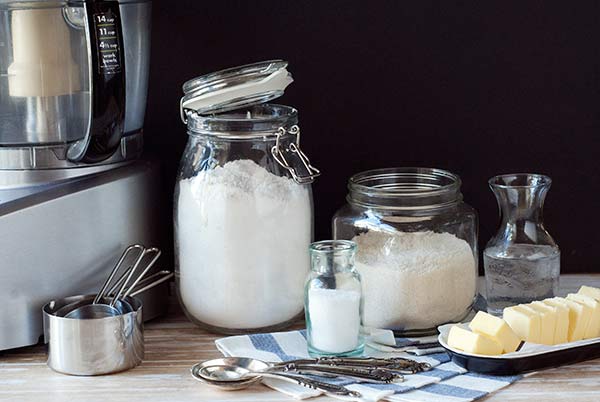
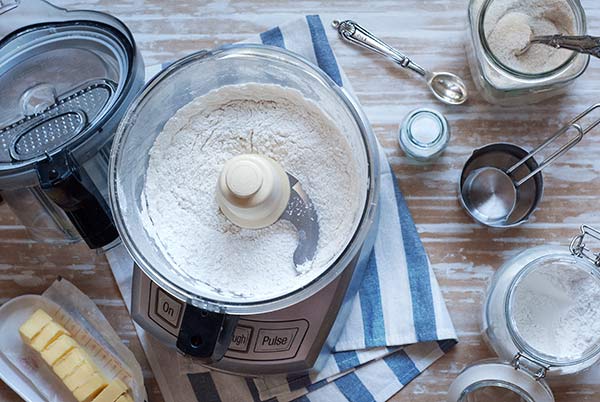
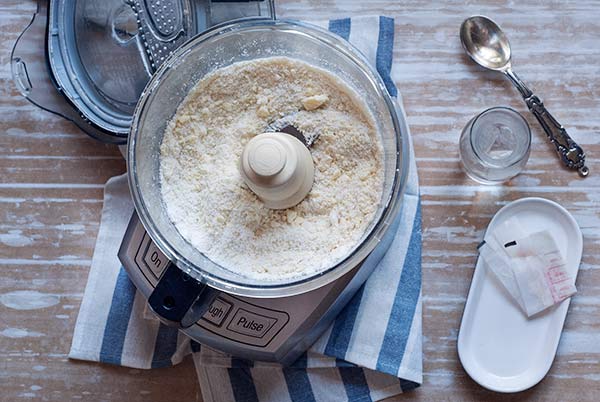
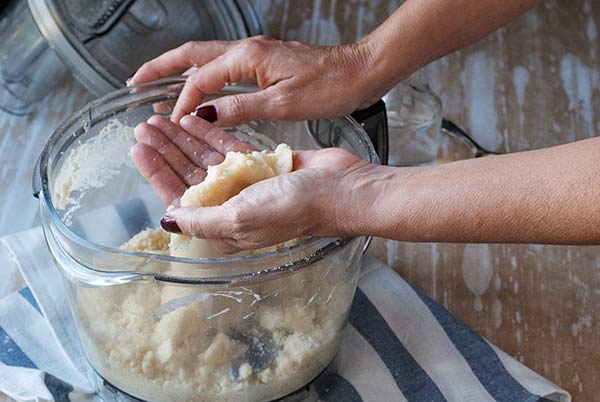
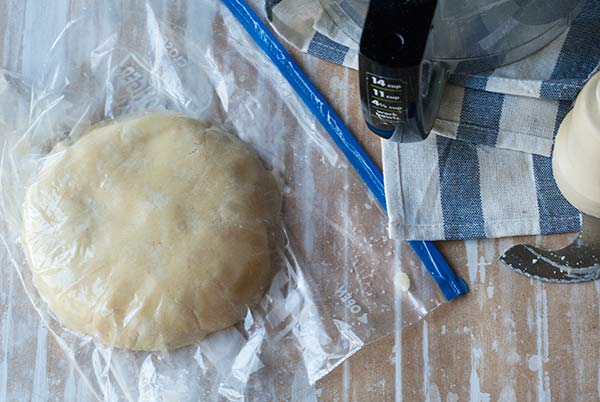
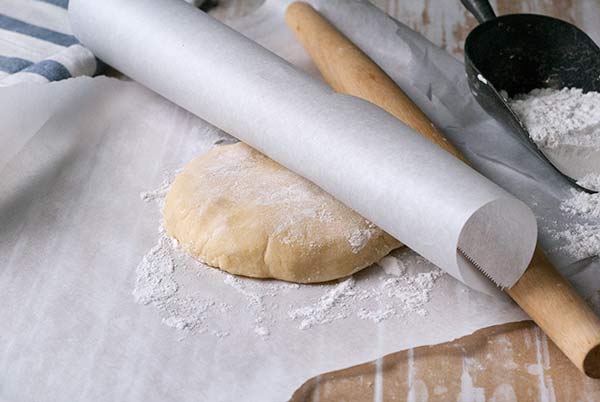
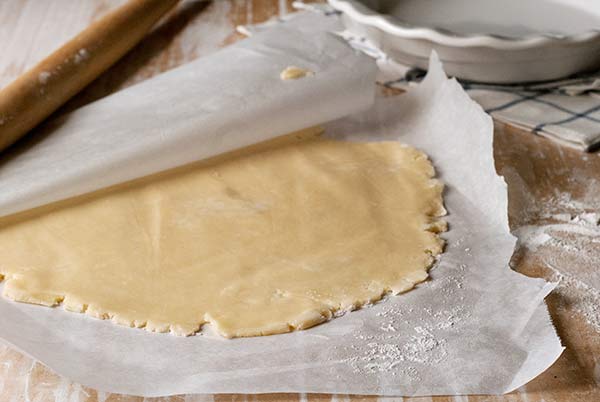
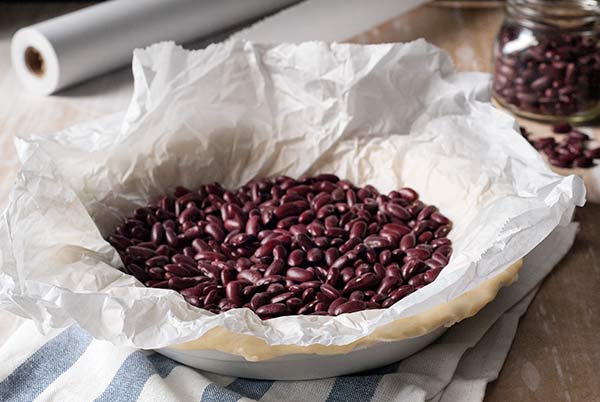
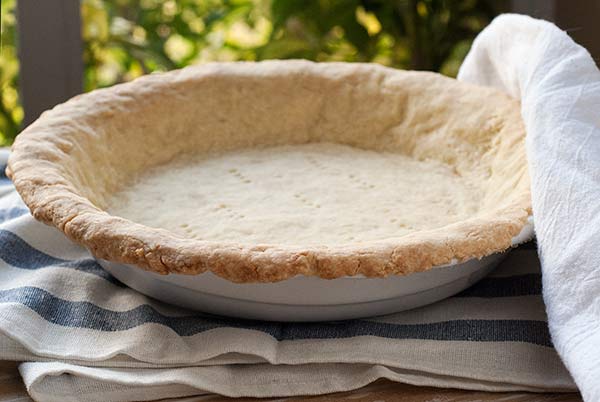

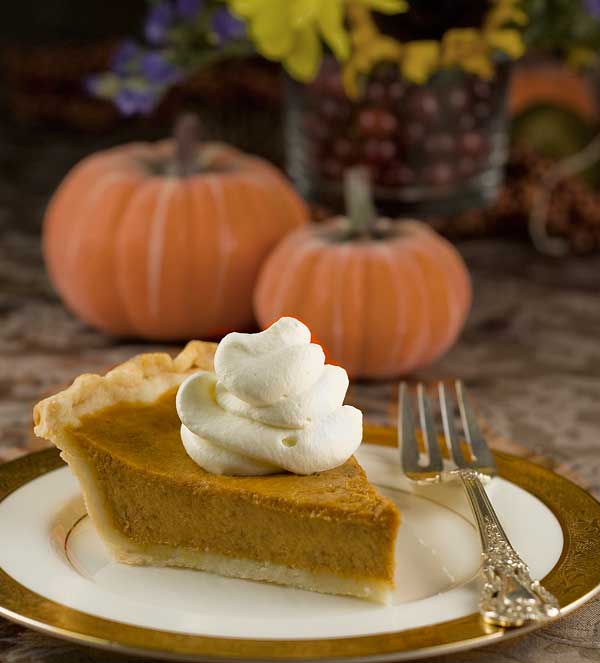












Well it sure sounds good, It’s so hard to get a decent pastry gluten free. I find that a lot of butter substitutes have a higher water content than regular butter, and of course they’re not as tasty :) I’ll try this recipe out this week, if I can just decide which one of my favortite fillings to use!
That’s the fun part and of course if dairy is not an issue then butter is always better! :)
Carol, I tried this but it was awful, I think my flour mix was not a good one – store bought. What do I specifically need to get in regards to a flour mix??
Hi Rosemary – yes I have to agree with you that most gluten free flour blends are awful! That’s why I created my own which you can see here – https://gluten-free-flour.com/
However you can make your own at home. The trick is to use either superfine white and sweet rice flours (you can buy on line) or (a much less expensive option) buy Asian white and sweet rice flour – I like Erawan Brand. Here’s the recipe:
4 1/2 cups white rice flour
1 1/2 cups sweet (glutinous) rice flour
2 cups potato starch (not potato flour)
1 cup tapioca starch
4 teaspoons xantan gum (or guar gum)
Whisk the ingrediet together well. Store in an airtight container, preferably in the freezer. Makes about 9 cups of flour.
Good luck!
Thank you! I forgot to flour the top of the dough before putting it between the paper to roll out and it was a sticky mess the first try but the second try was success!
Yes, it needs some flour to keep it from stiking – glad it all worked out ok!
Can you help me? I have King Arthur Flour with me. I have not used it. Would that work for a pie crust recipe?
Hi Meghan,
Yes, that flour should work fine for this recipe!
xo,
Carol
Rosemarie,
I’d like to also suggest a gluten-free flour mix I use. It’s very cheap, very simple, and most importantly, it tastes good. Also, one of the most important factors in a good GF flour is that it be light and airy. Most GF flour mixes are dense and heavy because of the various flours used in the mix. This one is extremely light because it incorporates cornstarch and very light non-wheat flours. I got it from a book called “Irresistibly Gluten Free” by Christina Davis (a book that has recipes that people actually eat on a regular basis, normal everyday food). She calls it “UNflour”. I use it all the time. Here’s the recipe:
3 cups rice flour (brown or white)
2 1/2 cups cornstarch
1 1/2 cups tapioca flour
I get my cornstarch for $1 a box at Walmart (can’t beat that). I get my rice flour and tapioca flour in bulk at the health food store (way cheaper than packaged specialty flours). I put all the ingredients into a sealable container, put the lid on and then just shake to combine it. No flour dust in the air, no spills on the counter, very easy. Voila! There you have it. I’m sure there are a thousand different GF flour mixes out there, but this one sure has worked for me. Hope that helps. :-)
This can be doubled or tripled, depending on how much GF flour you go through regularly. I just use it in place of regular wheat flour in recipes or anywhere that a GF recipe calls for a GF all-purpose flour mixture.
Thanks for chimming in Sarah!
Sarah – have you used your “unflour” blend in this particular crust recipe? If so, how did it turn out? Your unflour recipe looks simpler than some of the other homemade GF flour options…
Sarah can I substitute potato starch for cornstarch because my son is allergic to all corn products? Thank you, Gail
A a French, I second that. There is nothing better than better. For years i stopped eating butter and bought substitutes, it’s been 3 years now that I am back with butter and never felt so well! (Of course the thing is not to use 500 g of butter a day, like everything in life, MODERATION!)
Can this recipe be used not pre-baked with the filling in and using regular baking times for the pie recipe? I’m not entirely clear about that after reading the instructions.
Thanks
You can use this recipe in place of any pie crust in a pie recipe. In other words, if you find a recipe that tells you to pre-bake the crust and then fill, etc. just follow those instructions for this crust. If the recipe doesn’t specify to pre-bake, we recommend going ahead and prebaking it to ensure it gets baked all the way through.
Carol, this is the post I’ve been looking for all my life! (Okay, maybe just since the time I made my first–dismally awful–pie crust). ;) Thanks for all the great tips. I can’t wait to show my crust who’s boss! :D
That’s right Ricki – don’t ever let it see you sweat! :) Good luck!
Ooohhh!!!! Extruding is what I’ve been missing! Thank you!!!
Yep – after dozens of ruined pie crusts I finally figured that one out!
Anxious to try this one. I’ve literally experimented with over a dozen gluten free pie crust recipes without success. Just in time for the Holidays. Thanks, Nancy
Good luck Nancy! Show that pie crust who’s boss!
Great tips! I’ve only made a few pie crusts, but after reading your tips, I’m seeing many places where I went wrong. Oops…
Good luck Iris – I have ruined dozens of pie crust in my life. Gluten free baking is lots of trial and error with the emphasis on error :)
Carol, I truly don’t think I’ll ever stop loving my crustless pies (it’s been over 8 years now!), but sometimes a crust is desired. Plus lots of my support group members and readers would like a perfect gluten-free crust. I’ll give your tips a try soon and share them with many others! :-)
xo,
Shirley
I know – I loved my crustless pies for the first 8 – 10 years too and in fact I still do. But every once in a while…
I can’t eat potato starch what should I use to replace it? Thanks, Gaile
Hi Gaile,
You can replace it with corn starch or just double the amount of tapioca starch. Personally I would double the tapioca. Happy Baking!
This crust is so beautiful, Carol! Perfect timing, too. I roasted a pumpkin this morning. It’s time for pie!
Wow – pumpkin pie with roasted pumpkin, delish!
oh my goodness!! What great great tips! I will be applying all of this! And what beautiful pies!!
Carol – I have truely missed my apple pies so much!!!!! This pie crust sounds great. Can I make a double batch and use the second one for topping the apple pie and cook the crusts and pie filling at the same time???